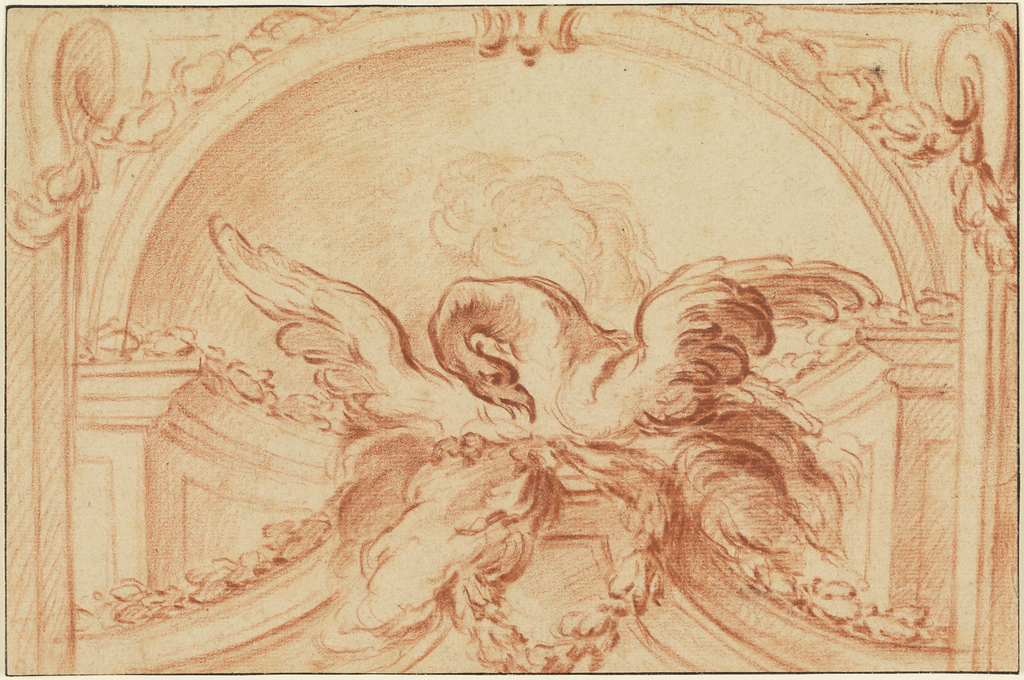Gilles-Marie Oppenord (1672-1742) was born to a Dutch Cabinet maker who worked exclusively for the French Court. After having trained under his father, Oppenord set out for an education in Rome in 1692. It was there that he studied under the director of the French Academy in Rome, who encouraged him to pursue architecture by recording the dimensions of buildings in the city, first ancient, then contemporary. Oppenord found himself particularly fond of Borromini’s work.
Clearly, Oppenord’s education paid off. This drawing was drafted while Oppenord was working as the Director of Buildings for Louis Philippe II, duc d’Orléans (1674-1723) just prior the Duke’s regency. In this position, Oppenord remodeled the Palais-Royal, where he designed everything from the walls to the candlesticks.
In this drawing, an eagle has just flown into a garland-draped niche and is about to pull a wreath into position on top of a pedestal or socle. The bird is both majestic and imposing in its representation reflecting a similarly regal patron. This suggests that the eagle is a reference to the duc d’Orleans who was about to become regent at the death of Louis XIV, who in fact died in 1715. Unfortunately, the intended location for this niche in the Palais Royal is not yet known.
Oppenord makes use of red chalk as well as pen and brown ink. Red chalk, also known as sanguine, was not widely used at the time, though its use grew during the rococo period to which Oppenord is considered an early contributor. This association is not surprising being that the regency period marked the transition between the baroque and the rococo in France. Cooper Hewitt holds a number of Oppenord drawings related to the Palais Royal interior architecture and furniture, as well as a sketchbook of his architectural drawings made in Rome.
Julia Pelkofsky is a Master’s Fellow in the Department of Drawings, Prints & Graphic Design at Cooper Hewitt, Smithsonian Design Museum. She is currently working on her MA in the History of Decorative Arts and Design at Parsons, the New School for Design.

One thought on “A Regal Post”
Defrance Christophe on November 24, 2019 at 4:19 am
Je suis en mesure de vous proposer une belle feuille de cet artiste circa 1699.
Cordialement,
Christophe Defrance